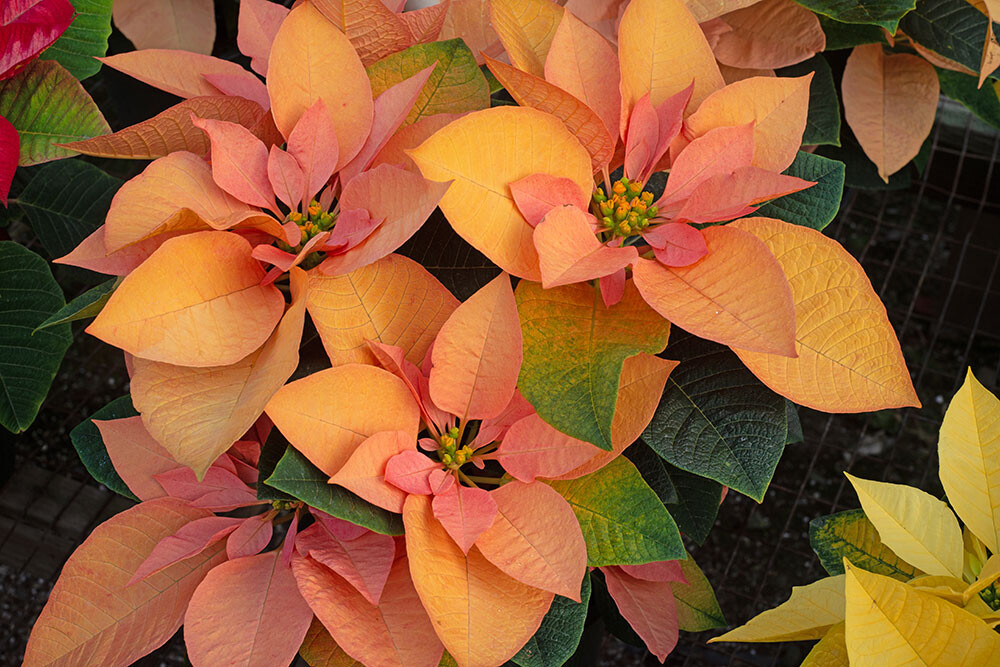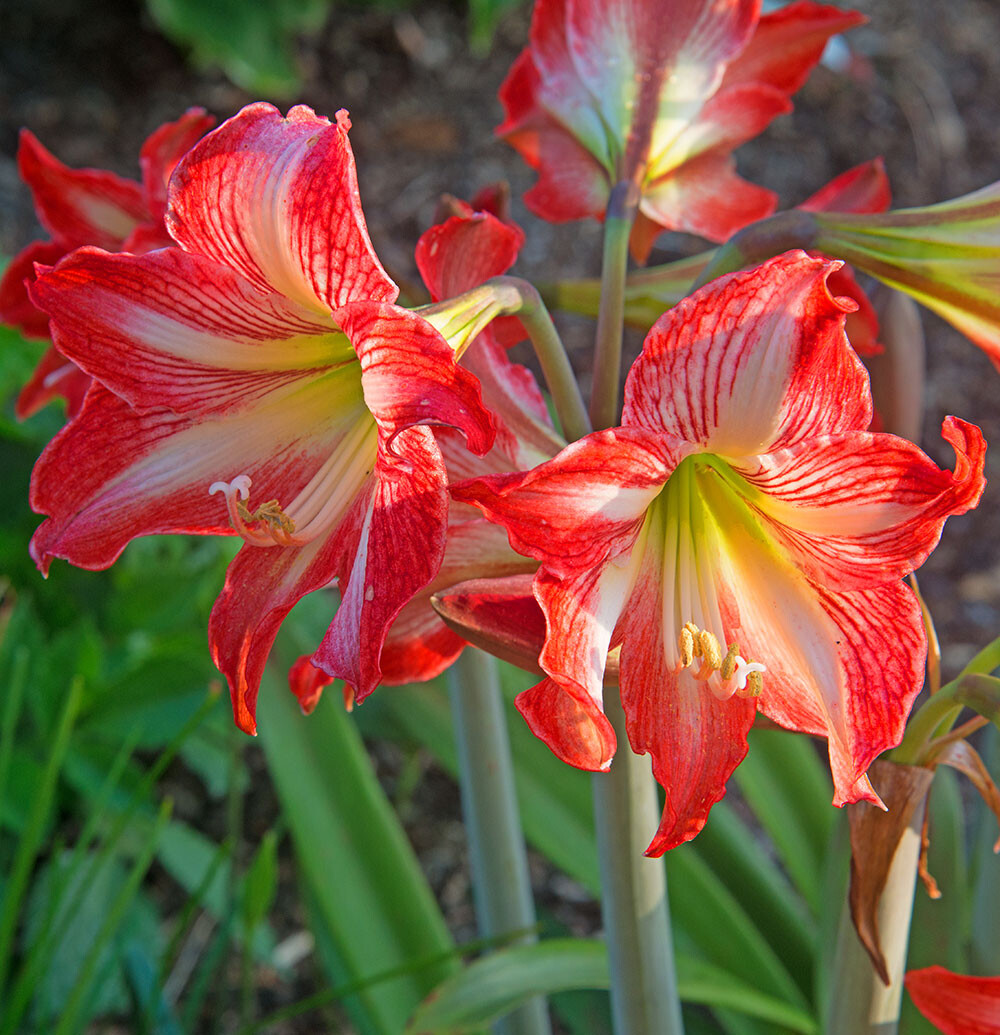The scramble to find perfect Christmas presents has begun, and for gardeners, the beautiful amaryllis (Hippeastrum sp.) is always a classic go-to gift. Whether as a bulb-in-a-box or a full-blown flowering plant, amaryllis can deliver much-needed cheer to comfort backyard growers through the winter blahs.
But when its flowers fade and warming temperatures entice you to go out and play in the spring garden, what becomes of amaryllis? Well, why not take it with you? Although they can spend their lives as houseplants, the amaryllis selections typically sold as Christmas baubles are usually hardy enough to survive and even thrive in area gardens. As a bonus, indoor amaryllis pretties won’t be bothered by outdoor deer. Note, though, that they are toxic to pets.
To prepare for an in-to-out transition, after the flower show fades, snip off the spent blooms and keep your amaryllis in a sunny room until the last average frost date in the spring. Then plant it in your garden, picking a site that basks in early to midday sun, but, if possible, stays a bit shady during the afternoon heat.
The planting area should drain readily — meaning a raised bed is ideal — and have well-prepared, rich soil with a dusting of time-release bulb fertilizer on top. Remove the amaryllis from its container, gently stretch out the roots, and place so the bulb’s top third is above the soil line. Then add a 2- to 3-inch layer of mulch around the bulb to help conserve moisture while the plant is settling into its initial summer in the garden.
Your amaryllis will probably spend its first year outside in a blossomless slumber. If any flowers are, by chance, produced, after they fade, cut them off to prevent energy from being wasted on seed development. From May until August, treat the plant to a light application of low-nitrogen liquid fertilizer each month.
Next fall, the leaves will die back. To keep it tidy, snip off the spent foliage. As the amaryllis settles into its winter dormancy, refresh the mulch to maintain its 2- to 3-inch thickness for natural insulation, just in case there are any nasty extended cold snaps.
With such babying, by the time its second year outside in the garden rolls around, your amaryllis should be a yearly dependable springtime bloomer — and this is when you can pat yourself on the back for a job well done!

With proper attention to its pot, this ‘Autumn Leaves’ poinsettia (my current favorite) can remain pretty through the whole Yuletide season.
Poinsettias are Christmas. If you purchase one (or many) for your holiday decorating, to keep it looking sensational through the Yuletide season, make sure to situate it in a well-draining pot to prevent swampy, root-killing conditions in the growing medium. This means, obviously, holes in the bottom of the container. For the same reason, if the pot is wrapped in cheerful foil, it’s gotta go. Also, an extra-large poinsettia can be top heavy in a plastic pot, so think about moving it to a clay container for better stability.
To Do in the Garden
November
- The flower parade down on the perennial border can continue deep into the fall when you grow such late-blooming showoffs as swamp sunflower (Helianthus angustifolius), Confederate rose (Hibiscus mutabilis), goldenrod (Solidago sp.), Mexican bush sage (Salvia leucantha), and climbing aster (Ampelaster carolinianus).
- Are your prized hostas, peonies, or daylilies beginning to outgrow their allotted space in the garden? Now is a good time to dig and divide them. Relocating divisions to other parts of the garden is one option, but also think about passing along any extras to your gardening buddies.
December
- Evergreen hollies are dependable year-round constants in the garden, but for some extra visual snap in the early winter landscape, consider planting deciduous hollies. Two in particular, possumhaw (Ilex decidua) and winterberry (Ilex verticillata), are natives with many cultivar choices that flash bright berries on bare branches during the coldest months.
- Now is not too soon to shop for next year’s garden, so start requesting seed and plant catalogs and begin perusing all the possibilities from e-nurseries, because ordering in the spring could be met with the dreaded notice: “Out of Stock.”
- The 2024 Gift Guide
- Sweeten Your Season
- Let It Snow
- Starry Night
- Things to Do: November/December 2024
- Mindful Merriment
- Erica Chats: Surviving Holiday Stress
- Small Business Spotlight: Golden Hex European Food Market
- Nonprofit Spotlight: Hands for Hopes
- Liquid Assets: Turtle Tinsel
- Liquid Assets: Pumpkin Spice Cheesecake Espresso Martini
- Garden Adventurer: The Ins and Outs of Amaryllis
- On Trend: Caroling







